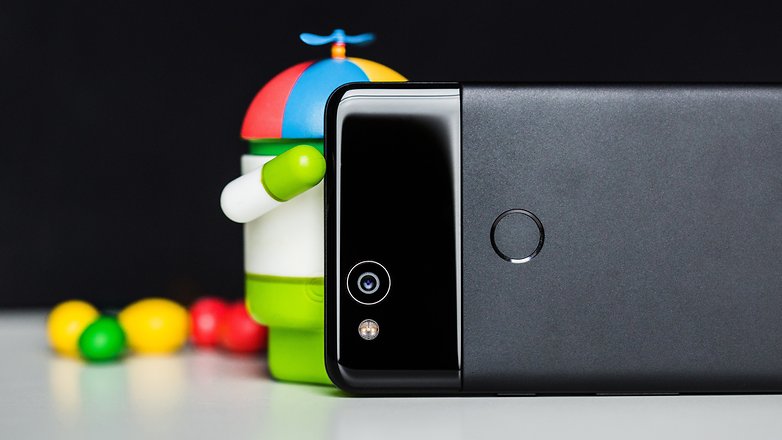Contents
Android Oreo 8.1 means a big update for the Pixel 2 camera. The Pixel Visual Core signal processor responsible for image processing and machine learning is finally activated. Photos of all camera apps are then processed with HDR +. What sounds like a massive improvement can also create confusion.
- Google Pixel 2 in the test: the essentials are invisible to the eyes
- The best camera apps for Android
Pixel 2 owners can look forward to better photos in December: Google’s contrast optimization HDR + will then also be used for photos in WhatsApp, Instagram or Facebook. Finally, alternatives to the pre-installed camera app can use the full dynamic range of the camera. The problem: Apparently, the feature becomes compulsory in most scenarios.

The Visual Core is considered one of the surprise news of the new Pixel devices. In parallel to Qualcomm’s Hexagon ISP, Huawei’s NPU and other signal processors in the industry, Google was secretly working on its own chip. The annoying thing: The software for the chip was not ready for the release of the Pixel 2 / XL.
- Pixel Visual Core: Intel has its fingers in the Pixel 2 (XL)
Now Google submits the driver via update and users of the second developer preview of Android 8.1 can activate the visual core in the developer options for photos. Since it should provide speed improvements in image processing, Google promptly activates HDR + for all photos you take with the Pixel 2 / XL from Android 8.1.
HDR + is activated in all apps “that use the camera API”. This means the ancient camera API, which was actually made redundant in 2014 by the more complex but professional Camera2 API. But it is still used by a number of apps. The Camera.takePicture () command contained in it then inevitably takes an HDR + photo.
Modern camera apps look old
The irony here: camera apps developed with the more modern Camera2 API with extensive manual options for more professional shots do not benefit immediately. To use hardware HDR + of the Pixel 2, the developers would have to raise the API target to level 26 (Android 8.0), with which they currently reach 0.3 percent of all devices. This comes from an older message from the XDA developers .

In the quick test, after some tinkering, we found that HDR + could be used in Open Camera (Camera2 API deactivated, HDR activated). Details and color are significantly better than in the conventional implementation. But the waiting time for the result is strikingly long. Why it is like that?
- Test images in full resolution for more details
Just as we shot the test images, Open Camera received several HDR + -processed JPGs from the Pixel Visual Core, which the app then processed into an HDR image; it was nested HDR so to speak. We already asked open camera author Mark Harman whether the HDR + constraint makes sense from his point of view. An answer from the developer of this app is still pending and will be submitted later.
The implementation seems well-meaning but misleading
This is particularly confusing from a user perspective. Because it currently appears that from Android 8.1 Oreo all photos taken with the Pixel 2 / XL will be HDR + photos automatically and without the user’s knowledge. In WhatsApp, Telegram and Instagram, this ensures better results. Opinion by Eric Ferrari-HerrmannGoogle should continue to enable system-wide HDR + to be switched off.Do you agree?5050128 participants
Opinion by Eric Ferrari-HerrmannGoogle should continue to enable system-wide HDR + to be switched off.Do you agree?5050128 participants
In a third-party camera app like Open Camera, on the other hand, this means that the HDR button must be reprogrammed. A possible solution would be that the Pixel 2 / XL uses the Camera2 API as standard and then calls the old Camera.takePicture () method when HDR is activated . This interface hopping is the only way to strike a balance between user control and efficient hardware HDR +.
The test starts with Developer Preview 2
Google assures in its developer blog : “If your app uses the camera APIs and you have a Pixel 2, you can test an early version of the Pixel Visual Core from Developer Preview 2.” You have to activate the function first in the developer options under Camera HAL HDR + , as you can find out in the separately published release notes for the last preview of Android 8.1 . The step is expected to be dropped when the final version of Android 8.1 is released in December. And then the user will probably no longer be able to switch off the forced HDR +.
What do you think of Google’s HDR initiative? Is it an important step for improved smartphone photos or do you think that pixel users are now being patronized even more how to take their pictures?